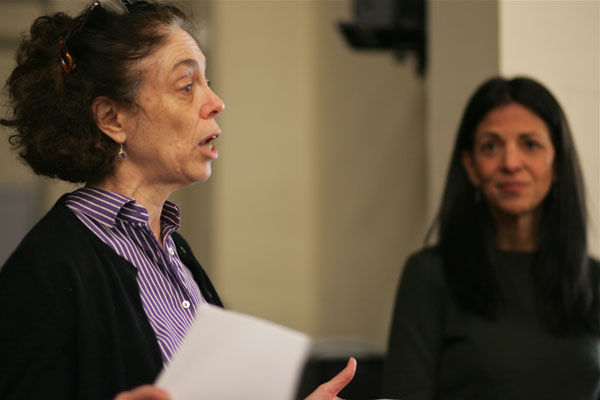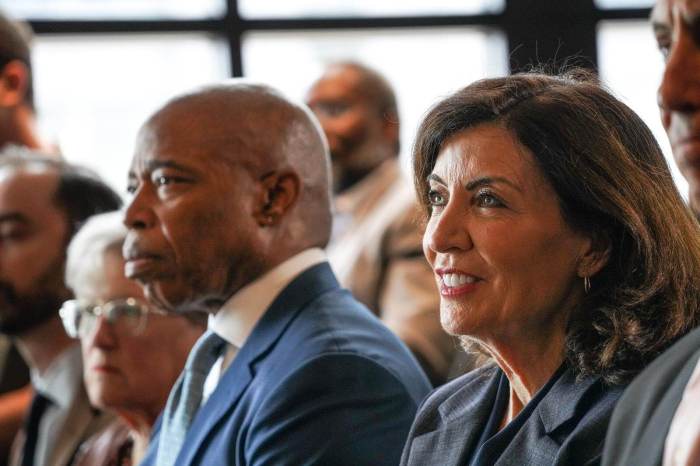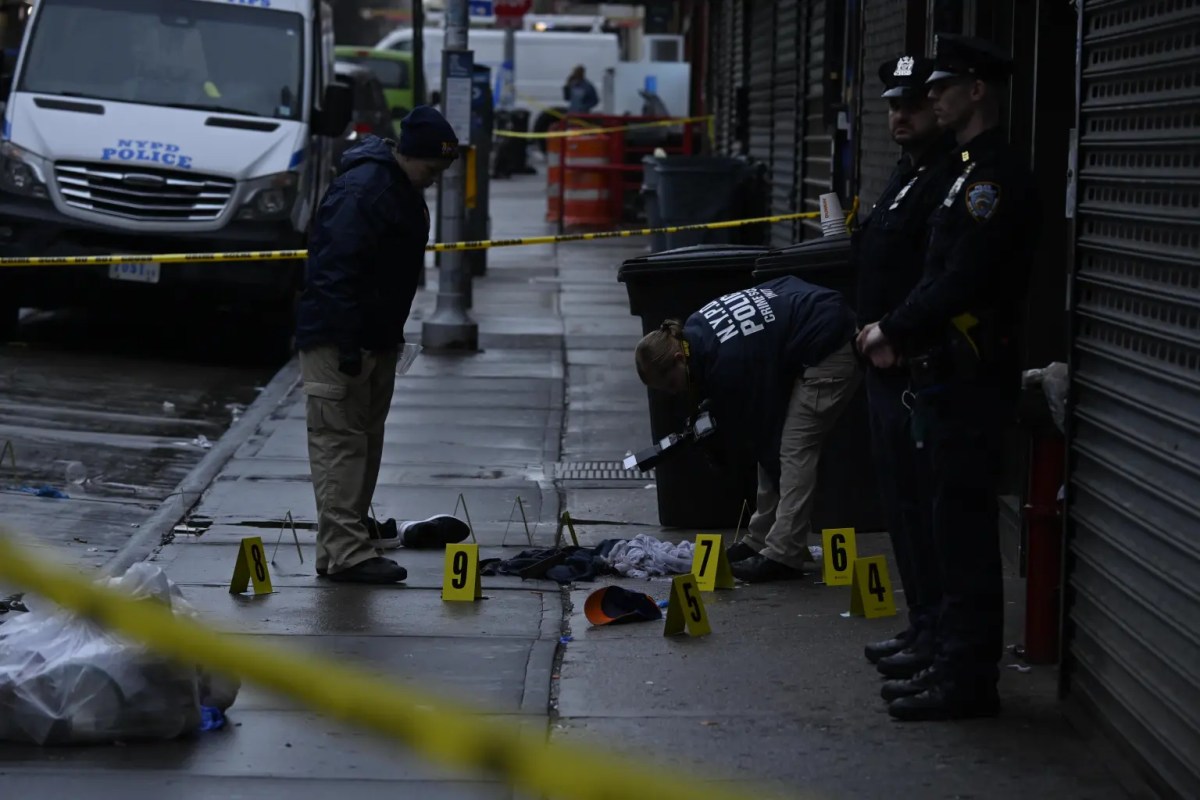
P.S. 3 Principal Lisa Siegman spoke at the C.B. 2 Transportation Committee’s Feb. 7 meeting to request approval for a school recreational space on Grove St., between Bedford and Hudson Sts.
BY SAM SPOKONY | Due to overcrowding and loss of indoor space, parents and teachers at P.S. 3 are seeking to turn a portion of Grove St. into a recreational area for the school’s students. And amidst some uneasiness from local residents, the Community Board 2 Transportation Committee resolved to recommend instituting a trial period for the plan, lasting one school year, which would likely begin in the fall.
P.S. 3 Principal Lisa Siegman and parent Denise Collins presented the school’s request for a play street on Grove St., between Bedford and Hudson Sts., at the committee’s Feb. 7 meeting.
They said that the school hopes to make the block available primarily to fourth and fifth graders only on school days and during various recess hours, which were initially stated as between 10:30 a.m. and 2 p.m. Siegman, who also said that space would conceivably be used by around 100 children at a time, later said that the aforementioned time period could be shortened if necessary.
The play street program is jointly run by the city’s Departments of Health, Transportation and Parks, and was created to combat childhood obesity by opening up eligible streets to schools or community groups that need additional recreational space.
Since the three city agencies began collaborating on the program in 2010, 67 play street permits have been granted citywide, according to D.O.H., including 26 for schools and 41 for community groups.
A department representative also said that, during that time, there have not been any play streets created within the Community Board 2 area. The program existed before 2010, albeit without major city agency involvement, after the first play street was created in 1914 by the Police Athletic League.
A play street permit requires approval first by the local community board, then by the local Police Department precinct’s community affairs office, then by D.O.H., and finally by D.O.T.
Spaces eligible for the program are those that are one-way streets, do not include hospitals, fire stationhouses or other facilities that require emergency vehicle access, and are adjacent to the school or organization applying for the permit.
In the case of P.S. 3, the proposed Grove St. block conforms to all of those requirements.
But around a dozen residents of the street’s block between Bedford and Hudson Sts. showed up to the Feb. 7 committee meeting to oppose the school’s request, citing worries about the disturbances they believe it could cause for elderly people, families with infants and those who work from home.
“We’re not against children, we’re just against the noise,” said Richard Eric Weigle, president of the Grove St. Block Association, who does not live on the affected block but spoke alongside his constituents. “Grove St. is a little oasis of calm in this city, and you have to ask yourselves, how would you feel if 100 children were dropped off in front of your place for three hours every day?”
Other residents in opposition said they had only bad memories stemming from several years ago, when P.S. 3 used the block in a similar way. At that time, the school building also housed middle school students, and P.S. 3 representatives responded to those comments by pointing out that it was mainly the middle school-aged children who had caused such disturbances.
Siegman said that if a play street were to be approved, students using the block for recreation would be under adult supervision at all times, and would be required to follow a strict code of conduct barring them from entering private property, such as stoops, gardens or tree beds, as well as being required to clean up after themselves. She also stressed that P.S. 3 staff and volunteers would make sure that use of the block does not create any new hazards for residents.
“We want to be good neighbors,” Siegman said. “This won’t impede residents from getting into their homes, play will be stopped if cars need to get through, and we can also stop play if disabled residents need to pass on the street. We’ll maintain ongoing communication with the block association to make sure any concerns are dealt with.”
Several other members of the P.S. 3 community, including P.T.A. Co-president Nick Gottlieb, were also present at the committee meeting to speak in support of the play street request.
While it seemed unlikely that the Grove St. residents would be placated over the course of the meeting, they did eventually agree with the committee’s resolution, which calls for the play street to be implemented with a trial period of one school year. If that ends up being the case, the space could become a permanent fixture after the trial period expires.
Following the meeting, several residents did in fact say that, all fears aside, they would be willing to work with P.S. 3 in the hopes of making the play street a positive experience for all stakeholders.
The committee’s resolution will be voted on at the C.B. 2 full board meeting on Thurs., Feb. 21.

















